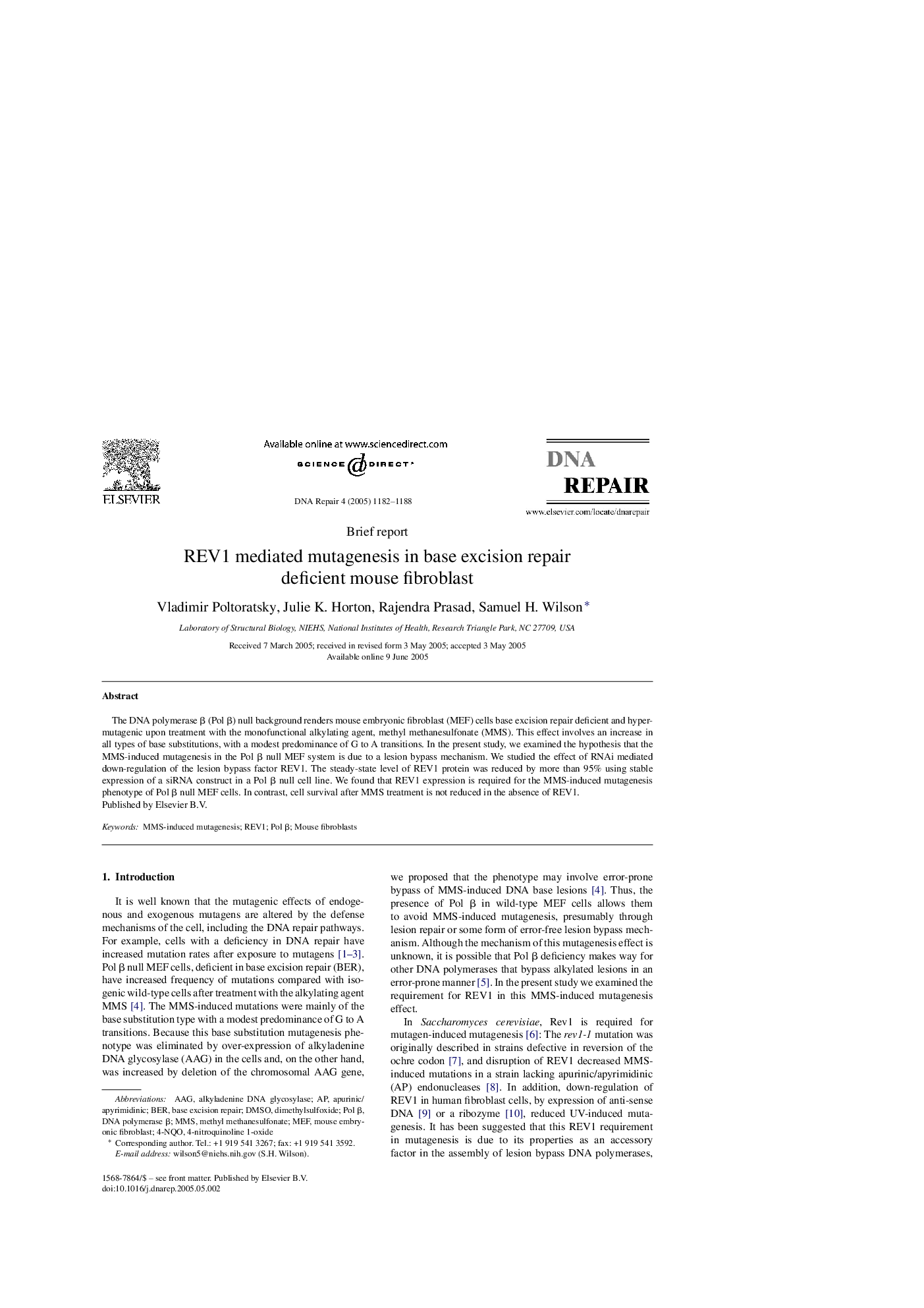| Article ID | Journal | Published Year | Pages | File Type |
|---|---|---|---|---|
| 10823596 | DNA Repair | 2005 | 7 Pages |
Abstract
The DNA polymerase β (Pol β) null background renders mouse embryonic fibroblast (MEF) cells base excision repair deficient and hyper-mutagenic upon treatment with the monofunctional alkylating agent, methyl methanesulfonate (MMS). This effect involves an increase in all types of base substitutions, with a modest predominance of G to A transitions. In the present study, we examined the hypothesis that the MMS-induced mutagenesis in the Pol β null MEF system is due to a lesion bypass mechanism. We studied the effect of RNAi mediated down-regulation of the lesion bypass factor REV1. The steady-state level of REV1 protein was reduced by more than 95% using stable expression of a siRNA construct in a Pol β null cell line. We found that REV1 expression is required for the MMS-induced mutagenesis phenotype of Pol β null MEF cells. In contrast, cell survival after MMS treatment is not reduced in the absence of REV1.
Keywords
Related Topics
Life Sciences
Biochemistry, Genetics and Molecular Biology
Biochemistry
Authors
Vladimir Poltoratsky, Julie K. Horton, Rajendra Prasad, Samuel H. Wilson,
